Affiliate disclosure: This post may contain affiliate links. Please see our Privacy Policy.
Breast milk is one of the healthiest substances in existence. It’s perfectly formulated to nourish a developing brain and help an infant double in size within just a few months.
The benefits of breastmilk go well beyond nutrition, and numerous studies show that it’s an effective treatment for topical skin issues as well. Breastmilk soap has been growing in popularity with parents looking for natural alternatives to treat infant eczema, and adults are trying it too. But does it work?
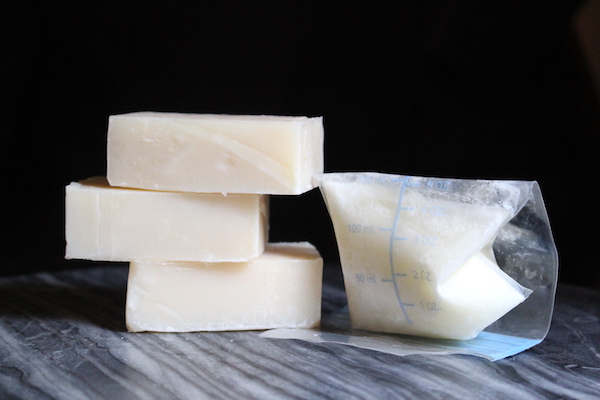
Many years ago I attended a homemade ice cream festival hosted by a large group of friends. It was a contest of sorts, where everyone brought their own ingredients and the ice cream was flash-frozen on-site using liquid nitrogen.
There were literally hundreds of flavors to try, but the most unique obviously got the most attention. The star of the show? Breast milk ice cream.
One mother had saved up her extra breast milk and pasteurized it at home before bringing it to share. It turned heads at first, but there’s nothing more nourishing than human breast milk, and most people were just eager to try it.
Fast forward more than a decade later, and I’m tandem breastfeeding two babies under two. At this point, I’m spending most of my time as a dairy animal under my two snoogly babies, but my creative side gets to thinking. What can I make with my breastmilk?
I’m a home cheesemaker, and I got pretty excited about making my own breastmilk cheese. The problem is, you need a lot of milk to make cheese, and my little ones weren’t really leaving any to spare.
My breastfeeding days came and went, and I never actually did anything with my breastmilk besides growing to healthy baby humans. I was content with that…until I found a few spare frozen bags of breastmilk in the freezer.
As luck would have it, a few days later Storey Publishing sent me a review copy of the book Milk Soaps, which takes you through the ins and outs of making soap with any type of milk under the sun….including breastmilk!
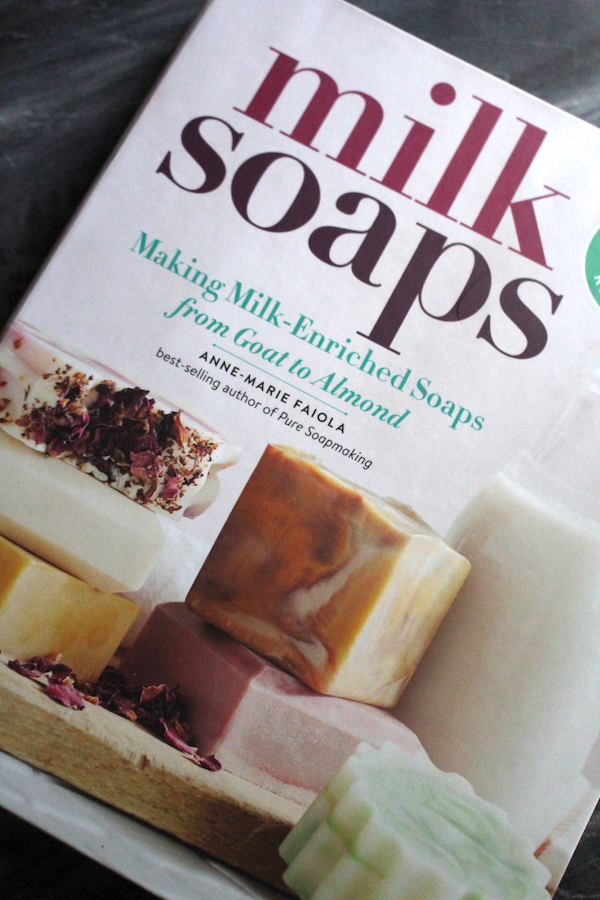
Why Make Breastmilk Soap?
So just because you can make breastmilk soap, why on earth would you want to? Beyond the pure novelty of washing with your own homegrown milk soap, there are actually a few good reasons to try it.
Breast milk has a long history of use topically. Studies show that it’s just as effective as hydrocortisone cream in treating infant eczema.
Natural compounds in breastmilk can also be helpful in treating acne and rashes (source) and doctors sometimes even suggest using the antibacterial properties of breastmilk to treat localized infections.
Does any of this come through in a finished breastmilk soap, after the milk has been transformed by lye? Honestly, probably not.
If you add breastmilk into the soapmaking pot with the lye it’s going to be chemically cooked, and any enzymes it may have aren’t likely to make it into the finished soap. So why bother?
Because beyond the micronutrients and enzymes, breast milk is actually great for soapmaking. Breastmilk contains more fat than cow’s milk, which will help make a creamier soap.
It also naturally contains more sugars, and the sugars in milk help promote a silky lather in a bar of the finished breastmilk soap. It’s also high in vitamins which promote skin health, and those all make it through the lye transformation from milk to soap.
If by chance any of the enzymes, anti-microbial agents or other breastmilk compounds make it through into the finished soap, then that’s just icing on the cake.
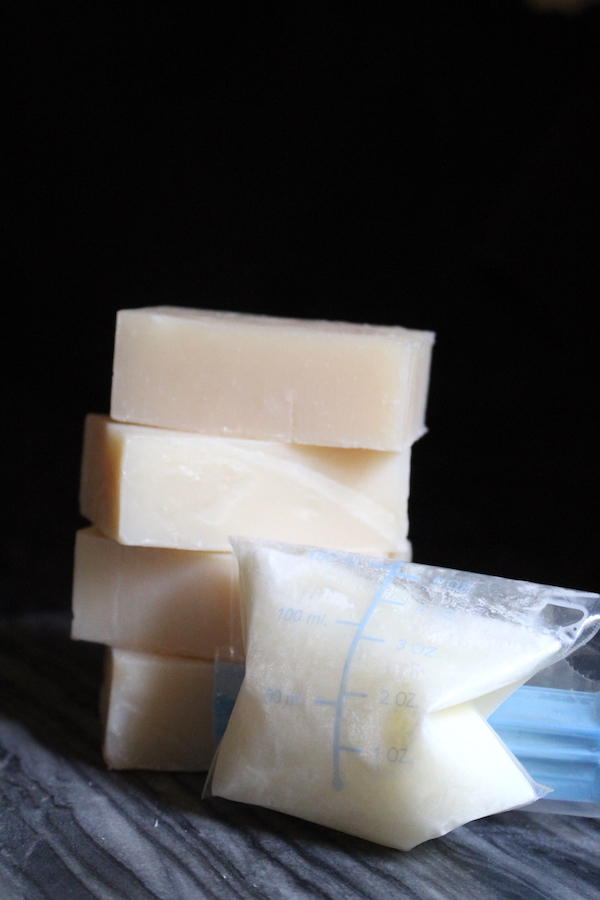
Choosing a Breastmilk Soap Recipe
Generally, when you make a milk soap, the milk is frozen into cubes which helps to slow down the lye reaction and prevents the milk from burning. Lye gets really hot when it contacts liquid, and that will carmelize the milk sugars (effectively cooking out all the micro-benefits of breastmilk). Here are the basic guidelines that the book Milk Soaps provides for making breastmilk soap:
“Believe it or not, people do use human breastmilk to make soap. It is higher in fat than cow’s or goat’s milk. It also contains lots of sugar and vitamins A (retinol), C, D and E. If soapmaking with breast milk, follow the basic instructions for other mammal milks (freeze the milk, add sodium hydroxide to it slowly, and keep the superfat at 10 percent or below.”
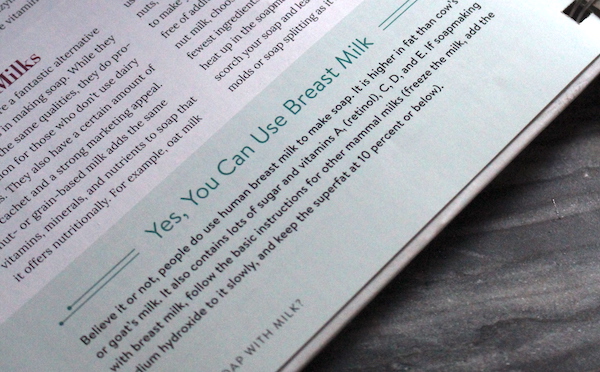
They suggest that any of the recipes in the book can be made with any type of milk, and there are some pretty wild recipes including soaps specifically formulated for donkey and camel milk. (As well as just about every plant-based milk under the sun such as hemp, almond, flax, oat, and almond milk.)
So in theory, you can use breastmilk in any milk soap recipe. The one that caught my eye though? A simple buttermilk castile soap recipe, that’s specifically designed for sensitive skin.
The only oil in the recipe is olive oil, and the milk in the recipe is added in at the end as a mix in (after the lye has reacted with the olive oil). If there’s any chance of maintaining the micronutrients and enzymes in breastmilk in the finished soap, this is it.
The breastmilk won’t have to be frozen into cubes, and you won’t have to carefully sprinkle in the lye to carefully manage the reaction. All you’re doing is making a simple castile soap, without any hard-to-find specialty oils.
The original buttermilk castile soap recipe from Milk Soaps suggests using a bit of natural herbal colorant and a few drops of lavender and peppermint essential oil, which I’m going to skip for the simplest homemade breastmilk soap bar possible.
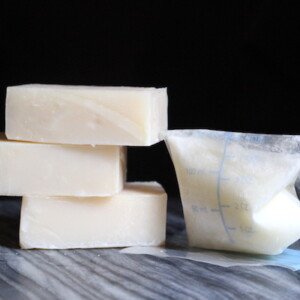
Breast Milk Soap
Equipment
- Large Bowls Non Reactive
Ingredients
- 35 oz. Olive Oil
- 4.5 oz. Sodium Hydroxide Lye
- 8 oz Distilled Water
- 5 oz Breastmilk
Instructions
- Measure the olive oil into a stainless steel pot or plastic bowl. Be sure that it's large enough to hold the whole recipe with room to mix with a stick blender.
- Heat the oil to 105 degrees and set aside.
- Measure the distilled water and lye into SEPARATE heat proof non-reactive bowls. Add the lye to the water a tablespoon at a time (never add the water to the lye!). Stir until the lye is fully dissolved.
- Add the sodium lactate into the lye water (if using).
- Allow the lye water mixture to cool until it's about 105 degrees.
- Pour the lye mixture into the warmed olive oil mixture. Insert the stick blender and blend to a light trace.
- Add breastmilk and stir to combine.
- Pour the soap into a 10'' loaf mold.
- Optional - Use a small spray bottle to spray the top of the soap with rubbing alcohol a few times over the next 90 minutes. This will help prevent soda ash forming on the surface. It's cosmetic, and harmless, but the soap looks better without it.
- Allow the soap to cure in the mold for 2 to 5 days. Un-mold the soap and cut it into bars.
- Allow the bars to cure for at least 6 weeks before using. They'll still be a bit soft at this point, and allowing 3 months before using will result in a firmer bar.
Notes
Looking for More Milk Soap Recipes?
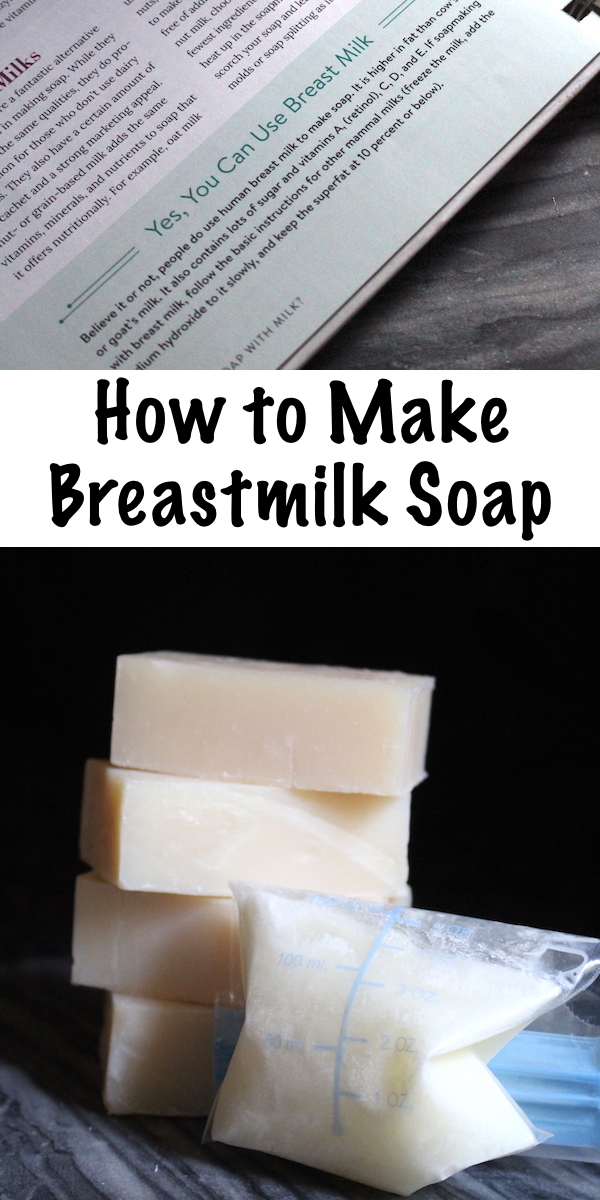
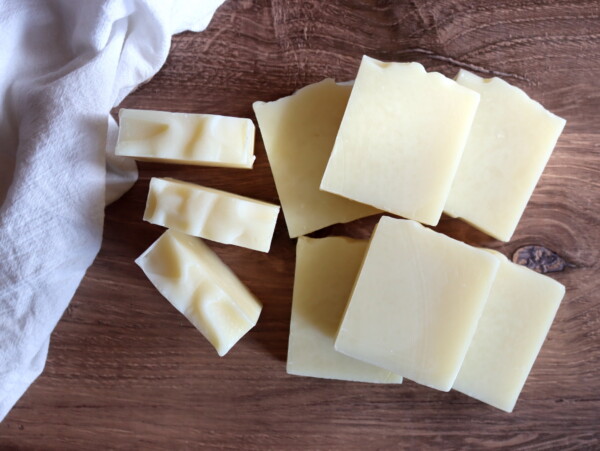
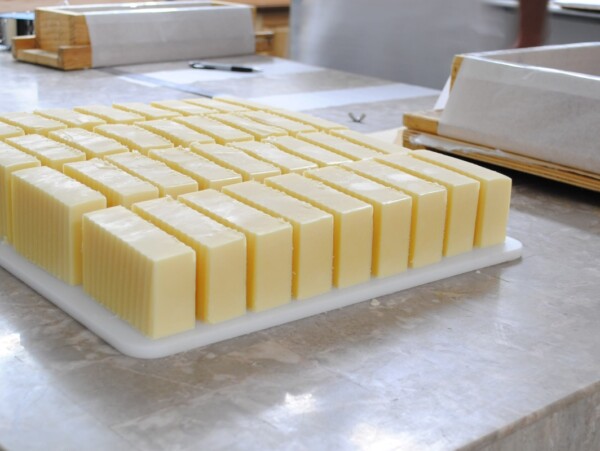
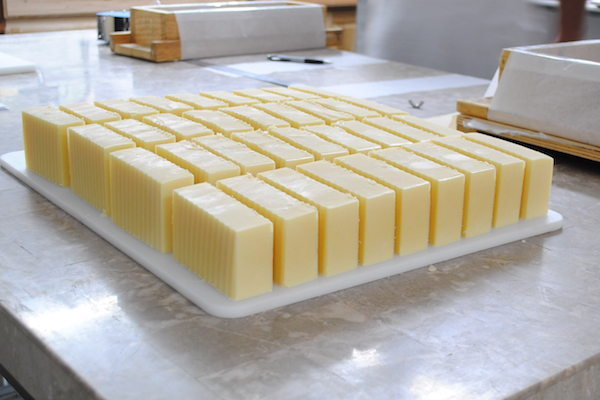
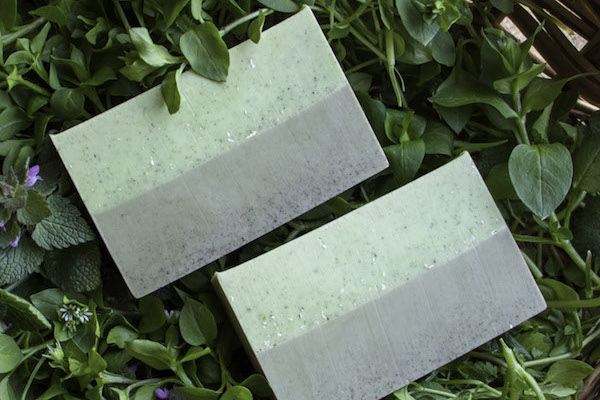










Hi! Thanks for sharing this recipe — I’m excited to try it out! I was wondering… if I was to add some lavender (or other) essential oil to make the soap smell nice, how much would you recommend using? (Or what would be the max amount you’d recommend? I don’t know if after a certain amount, it throws the ratios off and the soap doesn’t get hard, or some other issue… I’m new to this 😅)
Thank you!
If you’re adding in essential oils, you want to look at the safe usage rate for that particular essential oil. It’s not really about the processing of the soap as much as using a safe amount of the essential oil. There is an excellent essential oil calculator here. https://www.eocalc.com/calculate-usage-rate/